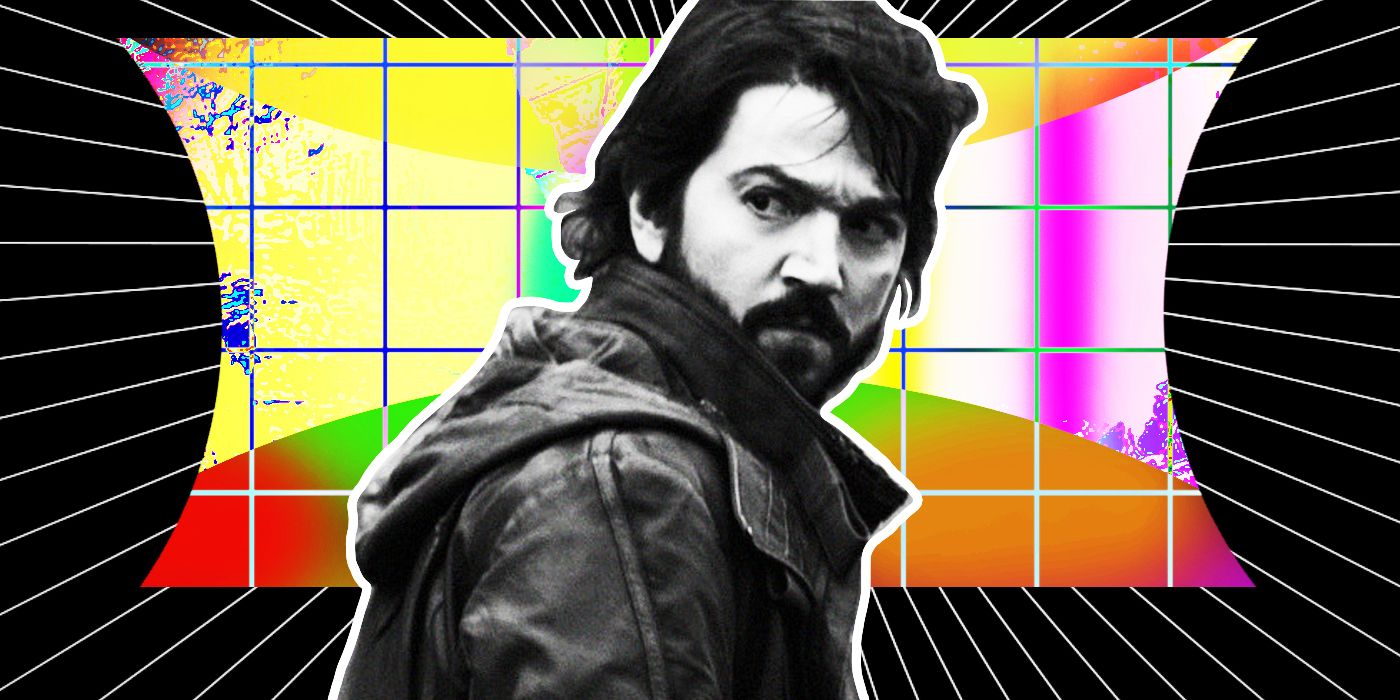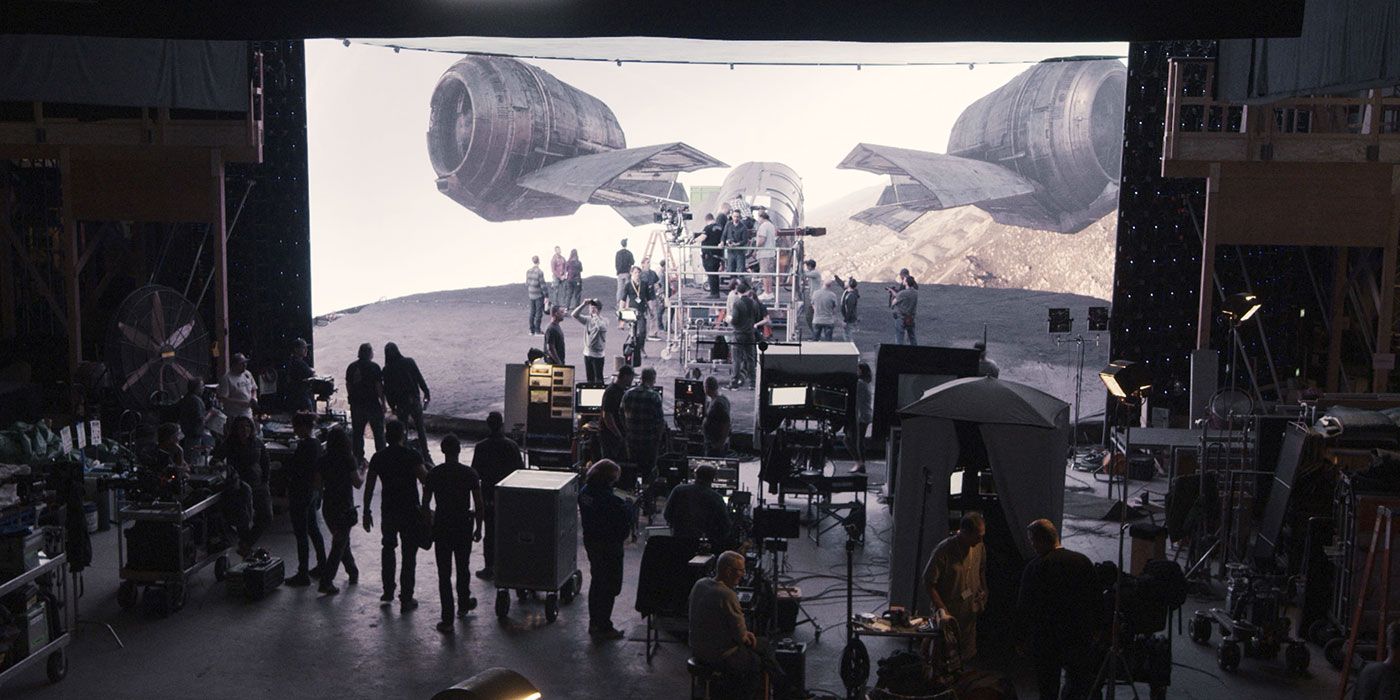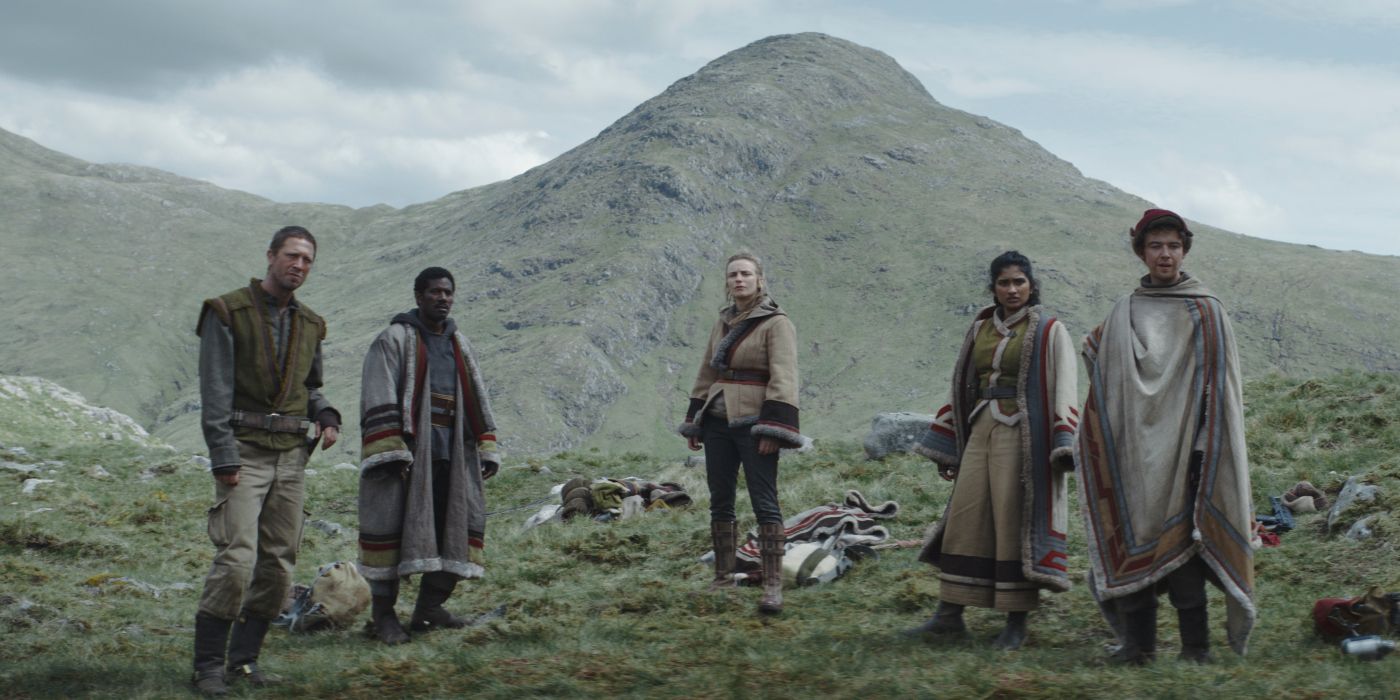The latest addition to the Star Wars franchise, Tony Gilroy's moodier and more pensive series Andor, is something of a refreshing departure — that is, a departure from the precedent set by Lucasfilm's other live-action series that have debuted on Disney+. Even the most recent episode "The Eye," delivers a tense and melancholic heist escapade that, in just under an hour's runtime, delivers suspense and compelling character stakes that the heists in Rogue One and Solo attempted with feature-length runtimes.
More significantly, however, Andor should be noted for a key difference in its production to the likes of The Mandalorian, The Book of Boba Fett, and also Obi-Wan Kenobi. Namely: a greater prominence of location shooting, practical sets, and reduced usage of The Volume. While the effect of this difference is subtle, it is the foremost reason why Andor's major set pieces have a tangible, visceral quality to them that was far less common in the other series, and indeed many other recent productions where The Volume has featured.
What Is The Volume, and How Does It Work?
The Volume is a revolutionary component of VFX technology, combining the projection of real-time digital backgrounds onto LED screens surrounding a set. The technology was pioneered for use in The Mandalorian, and the behind-the-scenes featurettes examined The Volume's ability to give cast and crew an unprecedented new way of visualizing the fantasy worlds around them. Working in tandem with some facades of practical sets in the foreground, the technology was designed to more effectively erase the boundary between real and digital, with ingenious use of forced perspective that moved the projected image to align with the camera angle. With an estimated budget of $100 million for the entire season, the debut of The Volume in The Mandalorian was able to achieve a level of immersion in digital sets that rivaled the decade's most expensive blockbusters.
As The Volume became more widely used, however, its shortfalls in creating a consistent level of immersion became more apparent. One notable giveaway that held back The Volume was that actors could not be lit with strong lighting that emulated sunlight, otherwise the light would simply reflect off of the LED screens. As a result, the lighting on the soundstage needed to be reduced, resulting in the performers being shot in very soft lighting if any at all. This began to disturb the seamlessness of the digital backgrounds when flatly-lit actors would be filmed in front of environments in direct sunlight, resulting in an abnormally flat color grading to these scenes to gloss over the difference in lighting contrasts. While The Mandalorian was particularly effective at minimizing this effect through practical sets that naturally cast shade over the performers, the prominence of exterior scenes shot on The Volume in Boba Fett and Kenobi suffer from a near-identical visual flatness.
Another problem with shooting the majority of scenes on The Volume was highlighted when the technology was utilized for several scenes in Taika Waititi's Thor: Love & Thunder. The Marvel outing received largely mixed responses online, with many fans calling attention to the unconvincing quality of the CGI effects and backdrops. Taika Waititi faced criticism for making an off-handed reference to the movie's sub-par visual effects during a time Marvel Studios faced renewed backlash over the work conditions and production ethic towards VFX artists.
Whether a coincidence or not, the scenes used as examples of unconvincing CG backdrops were those shot on The Volume (such as the visit to Omnipotence City). As with some scenes in Boba Fett and Kenobi, Love & Thunder's blocking within these scenes was very one-dimensional, with the characters hardly ever interacting with parts of scenery and cameras positioned in static shot, reverse-shot setups. This was another symptom of shooting on The Volume: sets could not be entirely surrounded by screens, meaning cameras were very limited in their range of dynamic movement within a scene. While The Volume still had a lot of potential (shots in The Mandalorian that have a practical cockpit against the void of space are some of the most seamless effects of the franchise), its repeated use across series and feature films was beginning to show its limitations that were beginning to inhibit the visual quality of these projects.
Andor's Lack of Digital Sets Makes a Big Difference
So, Andor is not using The Volume as much as the other Star Wars series; why is this an important change for the franchise? One of the central themes of Andor's premise is the portrayal of working life under the Empire's rule: bureaucracy, labor colonies, and the mundanity of existence. The journey of Diego Luna's eponymous protagonist is about finding a way to resist and impede the Empire that would make a lasting difference. The opening episodes of Andor make an effort to ground its settings in reality, using locations such as the Cruachan Dam and Reservoir in Scotland as an Imperial base in Episode 6.
Using the natural Scottish landscape allows the episode to establish a clear sense of scene geography, as well as reinforce the looming presence the Empire has over the indigenous population. Where scenes on The Volume can feel flat and one-dimensional from a directing standpoint, Andor has made good use of expansive practical sets to incorporate much more dynamic camerawork, incorporating more complex geometry and blocking into the flow of action scenes and cinematography. Naturally, the series still incorporates fully CG shots and environments (such as the brief scene featuring Genevieve O'Reilly's Mon Mothma in the Imperial Senate), but Andor's dynamic use of practical sets and location shooting is a clear indication that Lucasfilm's series for Disney+ are just as capable at delivering top-notch direction, shot composition and action as their feature-length counterparts.
Now that the Empire appear to close ranks upon news of the robbery of their payroll, the season will likely pivot to focus on Cassian's increased determination to make a difference, while Luthen Rael (Stellan Skarsgard) attempts to maintain his cover as a merchant.
Andor premieres new episodes every Wednesday on Disney+. Once the first season reaches its end, viewers will return to the galaxy far, far away when Season 3 of The Mandalorian premieres in 2023.



